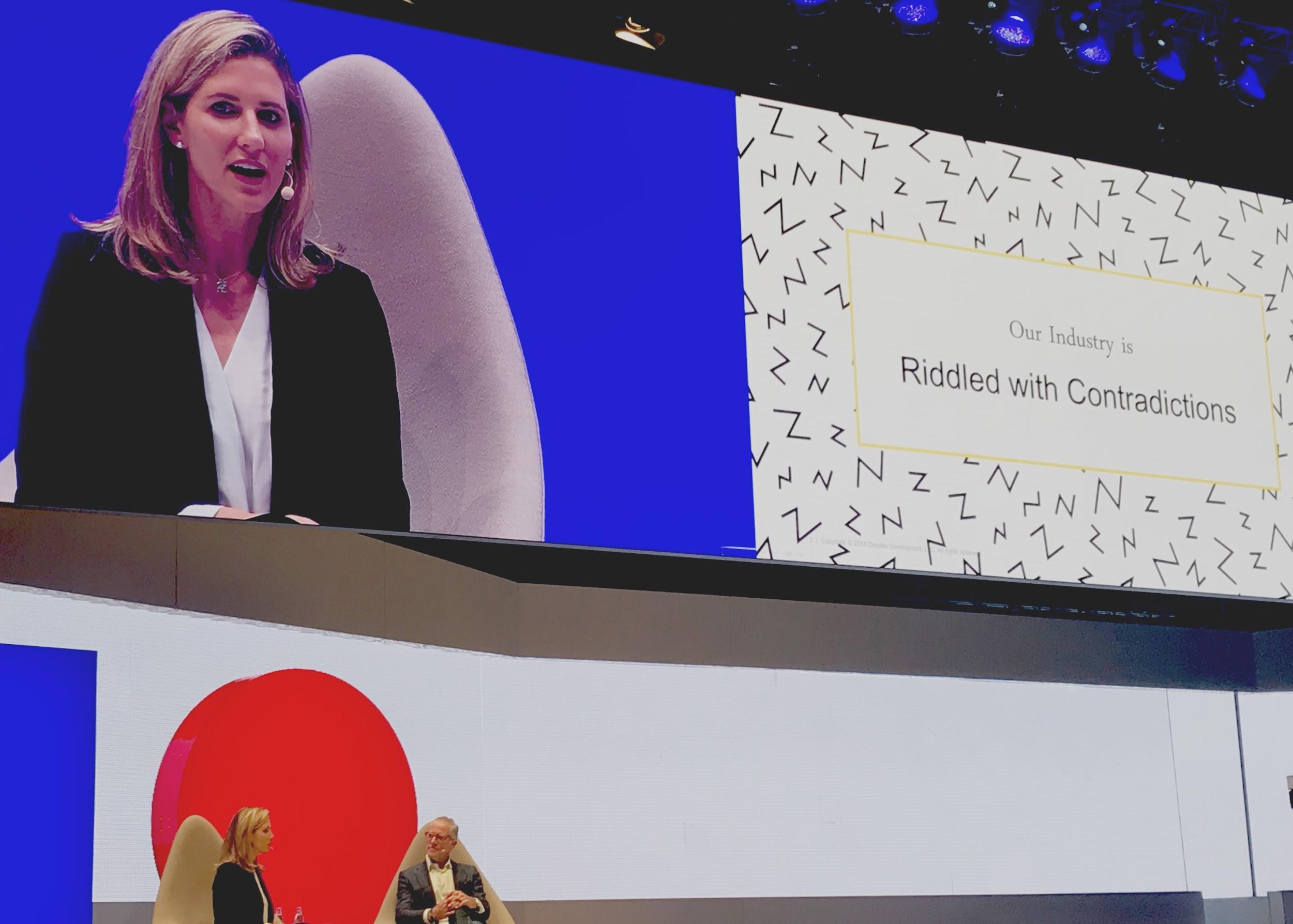 The digital economy is evolving at breakneck speed and DMEXCO, which took place in Cologne on September 12 and 13, gathered thought leaders across the digital marketing industry under one roof. The 41,000 visitors-strong event is held annually in Germany, so the focus is both on global and European topics.
The digital economy is evolving at breakneck speed and DMEXCO, which took place in Cologne on September 12 and 13, gathered thought leaders across the digital marketing industry under one roof. The 41,000 visitors-strong event is held annually in Germany, so the focus is both on global and European topics.
This year’s motto was “Take C.A.R.E.” – a timely reminder that the digital economy is aware of users’ needs and the ad tech industry should be making a shift towards more transparent communication. With pivotal changes such as GDPR defining the industry in Europe, there was no shortage of groundbreaking insights shared by 550 high-profile speakers. From ecommerce, to social media and blockchain, we’ve rounded up the top 5 industry insights and trends from the digital ad ecosystem worth knowing about.
Read More: The Dawn of the Platform Age: Digital Marketing Maturity at Last?
The future of advertising is in the blockchain
Blockchain has become an overhyped buzzword in our industry, but this is finally set to change. During a panel discussion at DMEXCO, MadHive announced a major digital advertising campaign that uses cryptography and blockchain to address transparency, eliminate fraud and address flaws in the OpenRTB system.
As Adam Helfgott of MadHive stated: “Ad tech is in a prisoner’s dilemma: if one entity starts cheating and bending the rules, an honest player is put at a disadvantage…you have no authentication that a third- or first-party data set is what you are buying.”
With trust and data quality being a dominant issue sweeping the ad tech industry, this new model akin to “putting an authentication breadcrumb trail” (Jonathan Steuer, Omnicom) uses a cryptography-encrypted pipeline to ensure that the target audience is actually the one that gets delivered. Ultimately, this benefits stakeholders across the entire supply chain, including publishers and buyers. Publishers can address their inventory allocation and yield maximization. The aim is to “create direct communication between buyer and seller, which transacts in a true marketplace” (Helfgott). Watch this space.
Programmatic goes in-house as brand safety becomes a key concern

 Programmatic in-housing continues to increase and is now the favoured model for advertisers.
Programmatic in-housing continues to increase and is now the favoured model for advertisers.
A Deloitte survey saw that 1/3 of marketers are cutting programmatic budgets, bringing it in-house, which warrants the question: are ad agencies dying? Alicia Hatch, CMO at Deloitte Digital, argues there has never been a better time to be a marketer. Blake Cahill, SVP Digital Marketing & Media at Royal Philips, agrees: “The rapid shift at scale is causing a tectonic shift in how brands organize themselves—do you need media agencies to push buttons for you, or be your own button pusher? Will this be automated by AI in the future? We’ll see.”
Read More: Resolving the Ecommerce Identity Crisis
Brands are centralizing adops. Stats unveiled at DMEXCO showed that, since January 2018, the primary model used to execute in-house programmatic is led by demand-side platforms and ad agencies at 35%; followed by 33% enterprise software and finally 32% demand-side platforms. According to Cahill: “The brand that builds their own tools and system depends on capabilities and how they’are organized…but, there is a lot that you can do centrally. We built [programmatic] internally so we can connect to our DSPs and target our messages, also if we do retargeting, not to annoy them. It depends on business ambitions. We have a blended model we are trying to scale”.
Instagram dominates social, while mobile leads advertising formats

Jim Squires, Head of Business at Instagram, delivered an impressive keynote on the role of social for brands, which is bigger than ever, and Instagram is its undisputed king with 1 billion registered users. “We live in a vertical world,” said Squires. The evolution of the social platform was chartered from its conception, to its “stories” feature, which was introduced in 2016 and offered the biggest change to Instagram ever. Moving forward, brands need to consider this, when it comes to social advertising opportunities.
As Squires pointed out quoting Marshall McLuhan: “the medium is the message” and with vertical video being native to mobile, having the message aligned with video creates a powerful, immersive experience. Understandably, the launch of IGTV – Instagram’s latest introduction – relies on “portrait” mode. The new long-form 60-minute video is designed for mobile and was born from the need of people wanting to watch more videos and younger people wanting to better connect with different types of creators. Massive amounts of celebrities and influencers with 15-25 million followers are already adopting IGTV.
Read More: Have We Lost Sight of Viewability?
Other key considerations and figures presented include:
- 3 million stories posted every day
- 90% of the time, we hold our phone in portrait mode vertically
- 65% of people perceive brands doing vertical video as more innovative
- People find vertical video more compelling and engaging
Consumer trust is vital to increase brand conversions across multi-channels


An Olapic study revealed that ⅓ of consumers have bought something because of a social media post. As we move forward, customer-initiated moments will become more relevant and advertisers need to start thinking cross-channel. The objective is to create a holistic campaign that doesn’t overload the user with ads.
Read More: A Beginners Guide to Positioning a Strong Online Brand
Other key trends in building consumer trust that we gathered at DMEXCO:
- Instead of upselling and just pushing out more ads, there’s an intention on getting the user back into a consideration mindset.
- Solve organizational challenges for good cross-channel marketing to eliminate the organizational silos that prevent cross-channel orchestration.
- New roles: there will be an “Audience Gatekeeper” that decides how the audience should look across different channels. “Audience Managers” will oversee the customer lifecycle, while the gatekeeper ensures there is no overcontact in a particular segment. These roles lea to less over-contacting, which annoys customers, and to fewer calls requesting to be removed from a mailing list.
Technology hypothesis in the consumer trust and data field:
- A predictive 360-degree customer view will become the industry standard (cross channel), and lookalike modeling will be pervasive for audience segmentation.
- Single channel vendors will become stronger than multi-channel vendors.
- Customer Data Platforms (CDP) will gain further relevance.
- WhatsApp marketing will become super relevant for customer-initiated moments. The big question is whether companies will have chat bots or humans to respond to customer requests. Results are good on WhatsApp channels. For Germany, the Facebook bots were too much, but it’s predicted that the WhatsApp channel will be strong.
Read More: What Does Original Content Mean?
Artificial intelligence and machine learning dominated DMEXCO 2018

The classic marketing funnel doesn’t exist anymore. Why should a customer come back to a brand? As ad campaigns struggle to answer this question clearly, marketers turn to AI for answers.
Brands need to increasingly start leveraging AI and machine learning to their advantage and be in the heads of the customer, in order to move them into the “consideration mindset.” This will become more important to handle well during customer-initiated moments.
The big question that marketers should start asking is: how can we react to a consumer talking to a brand in real-time? This is where AI can come in because it detects intentions. Algorithms look at user behavior, such as how they move their mouse, to detect mood and intent of the user.
First-party data becomes more important for AI and automation. It’s imperative to do as much as possible with your own data, which is generated from interactions with your customers, because of the increasing big data possibilities. Segmenting and driving ads works well if you emphasize your own data sources. Proprietary data is key, with special attention that must be paid to the linkage of the data.
Moreover, as classical ads continue to lose relevance in favor of valuable content, content marketing will create more value for the client. To respond to rising volume and demand, AI will also be used to automate this content and tailor it to the user.
Read More: Four Signs Your Document Management Tools Need a Fresh Look











